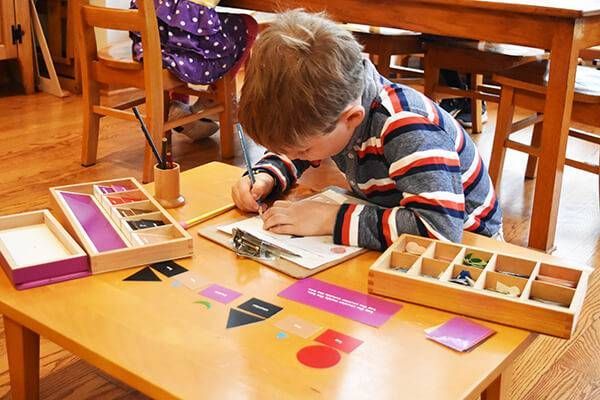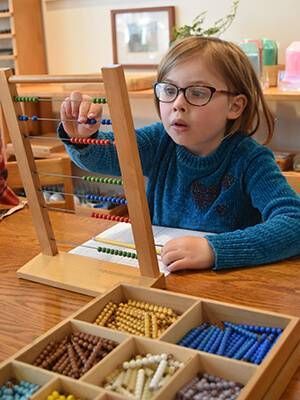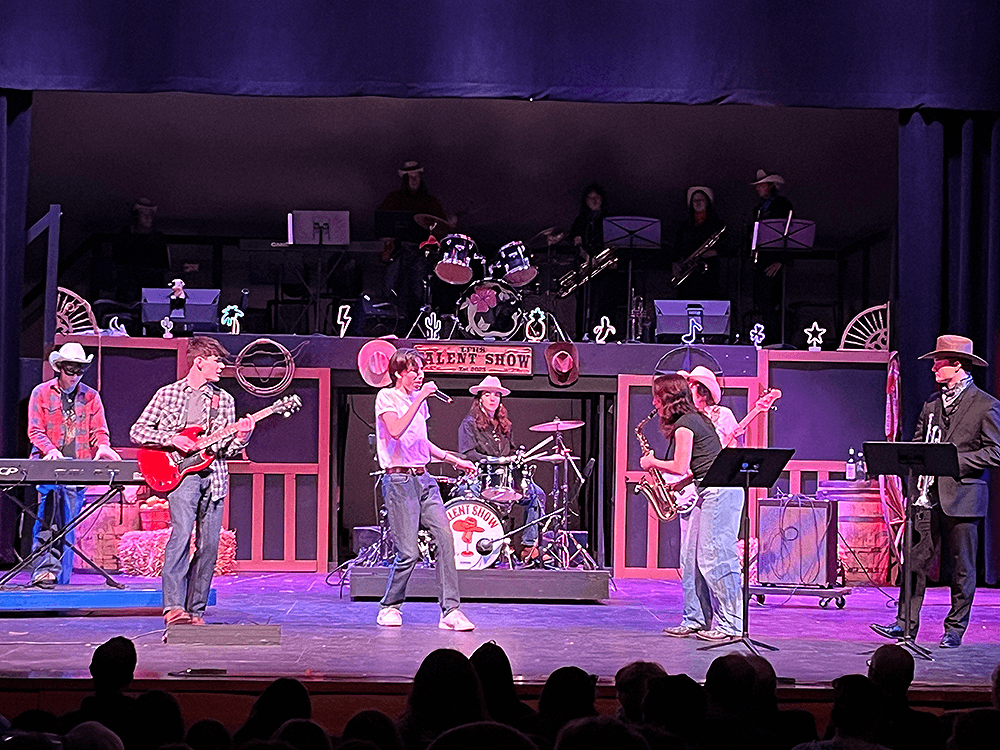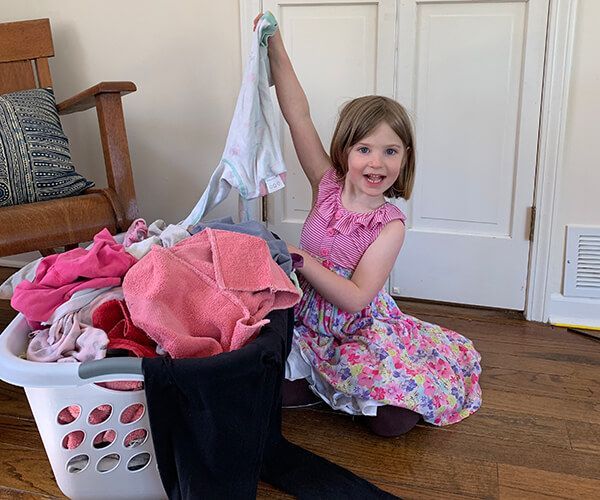
One of the most noticeable characteristics of a Montessori classroom is an absence of grades. No As, no Bs, no Cs, no Ds, and no Fs. Similarly, there is also an absence of testing. No exams. No tests. No multiple-choices questions. No essay questions.
This is often bewildering to people who are new to the Montessori approach. “But how do you know what the children are doing?” and “How do you know what they know?” and “How do you know what they need to learn?”

As with all aspects of the Montessori classroom, the answer has both a philosophical and a practical answer. Philosophically, Dr. Maria Montessori observed that children are intrinsically motivated to learn and master new concepts in the world around them. They don’t need grades or testing to motivate them. In fact (and this is proven by research), external motivators like grades actually diminish their intrinsic desire to learn. Likewise, testing has proven again and again to be a poor method for the process of storing information in long-term memory. Grades encourage competition and comparison. They inflate and deflate self-worth. Testing creates stress and the development of tools that mostly maximize short term memory.
So, given all the philosophical reasons one might have for utilizing learning and assessment strategies besides grades and testing, what might one use in its place?
This is where the magic of Dr. Montessori’s approach provides the necessary practical tools for evaluating students’ academic and developmental abilities, namely, record-keeping and observation.
Record-keeping
A Montessori teacher’s record-keeping album is a masterpiece in organization. Each album has a section for each child. Within that section is a list of every presentation for every material in the classroom, divided by subject area. These presentations represent all the possible work that can be done with every material in the classroom over the course of three years. There is an initial presentation, where a child learns the basic concept of the material, and then there are subsequent presentations, where they go more deeply into the concept, and explore more aspects of the work. Additionally, there is a category for “follow-up work,” indicating that a child will do this work on their own.
For each individual presentation, the teacher will mark if a child has been presented the material, if they have worked on it, how far they have gone with exploration of the concept, and, finally, if they have mastered it. All a teacher has to do is take a look at an individual child’s record-keeping section to know how much of a particular subject area of the classroom they have covered, and how much they have mastered. Here, the teacher sees if a child has been concentrating more on math or language, if they have mastered diagramming sentences, or if they have been given several presentations, but have not done the follow-up work necessary for deep understanding.

Teachers spend hours with their records each week, painstakingly taking notes on what children have done, what they have expressed interest in, and what they need to work on. Then they create individual lesson plans for each child that reflect these deliberations—ensuring that each child is excited about what they are learning, and also making steady progress through the curriculum.
It is important to point out that the curriculum for each classroom covers all essential lessons for those three years. Montessori teachers regularly compare their classroom curriculums to the local education requirements in their districts. This ensures that every child who completes a three-year cycle in a classroom will leave knowing everything they are expected to know by the local district—often more.
One of the ways that Montessori differs significantly from conventional schooling is that there is a concrete to abstract process for every topic. This means that a child is exposed to the concrete representation of every process before they work their way towards doing it independently on paper. A child who is pulled out of the upper elementary halfway through the three-year cycle and quizzed on what they know may not be able to show their work on paper. However, their teacher’s record-keeping will reflect that they are in the process of abstracting that process. For example, Cubing on paper is a specific lesson that children are expected to learn before they graduate from the upper elementary, but after they have done sufficient work with the concrete materials that represent cubing.
Several years ago, a young boy from Forest Bluff was taking a test on paper for diagnostic work with a therapist. He came across a long multiplication problem, and paused to ask the test administrator, “Do you have a Large Bead Frame?” (a hands-on material used for mathematical operations). Montessori teachers chuckle when they hear this story, knowing that it indicates his deep level of understanding regarding the concept of multiplication, as well as his own awareness of where he was positioned on the progression from concrete to abstract. Montessori children could probably prepare their own set of classroom records for themselves!
Observation
The second tool the Montessori teacher uses to assess a child’s development in the classroom is observation. The Montessori training thoroughly prepares teachers for this element of their work. Trainees listen to a lecture and write a paper on the process of observation. Then they practice this skill in Montessori classrooms, observing with specific assignments and taking notes, then writing summaries based on those observations. Observing is meant to be objective, informed, and always with the purpose of understanding children and the classroom environment.
Teachers take time each day to observe. The topic will vary from day to day. Sometimes a particular child is struggling socially or academically, or sometimes there is a particular area of the classroom that isn’t getting attention. By prioritizing objective observation with thorough note-taking, the teacher will get to know that student and the classroom better. And through that work, they will know what that child enjoys, what they struggle with, what they know, and what they don’t know. These observations serve lesson planning.
Careful observation can take the place of formal assessment. Children reveal themselves through their words and actions, and an observant adult will look deeper to learn about a child’s abilities and understanding. The Montessori environment is conducive for this kind of attention. A teacher gives presentations individually and in small groups throughout the day. In such small numbers, the teacher has time to check a child’s level of understanding, by asking leading questions, by observing facial expressions and body language, and by taking the time to listen to and watch each child process the information and concepts.

When I was a primary teacher, there was a four-year-old student in my class who was struggling with the Moveable Alphabet (a box with all the letters of the alphabet and is used for making words). While she could read the words in the Phonetic Object Box (a box with tiny objects with phonetic names and matching labels), she could not write any words out. She couldn’t seem to reduce words into individual sounds. I worked with her every day, and it seemed as though we never made any progress. Finally, I decided to step away for a week and see what she did on her own.
Left to her own devices, she took out the Phonetic Object Box and the Moveable Alphabet at the same time. Then she used the Moveable Alphabet to copy the labels on the Phonetic Object Box. This is the point where I should tell you that this exact activity was explicitly forbidden by my Montessori training. “It’s just busy work,” said the trainer. But when I cast aside this instruction and looked at this particular situation objectively, I could see that this four-year-old was working hard, fully absorbed, and matching the letters against the sounds. She did it again and again, gradually working up to writing the words from memory and then producing her own words. Eventually, she became a prolific writer in our classroom, producing pages and pages of beautiful stories.
Thank goodness for observation. Without it, I surely would have continued to try to teach this child my way, and I would not have been able to fully comprehend what she knew and what she was teaching herself. I still think of her—in college now—as the little girl who taught me the importance of observation.
Final Thoughts
Record-keeping and observation with this level of detail and reflection is an enormous amount of work. It would be easier to write tests, administer them, and assess children in a conventional and concrete way. Montessori teachers spend hours studying their curriculum albums, going over their records, carefully considering each child, making connections across the curriculum, taking observation notes, reading observation notes, and discussing the materials and their students with their colleagues.
The time spent behind the scenes is what makes the classroom come alive. It is what connects children to the materials, exciting them and encouraging them along their academic and developmental journeys. And, in the end, it is worth all that time and energy, doing it the hard way, the time-consuming way. It is a manifestation of every teacher’s passion and care for education and children. It is, in the end, a labor of love.


